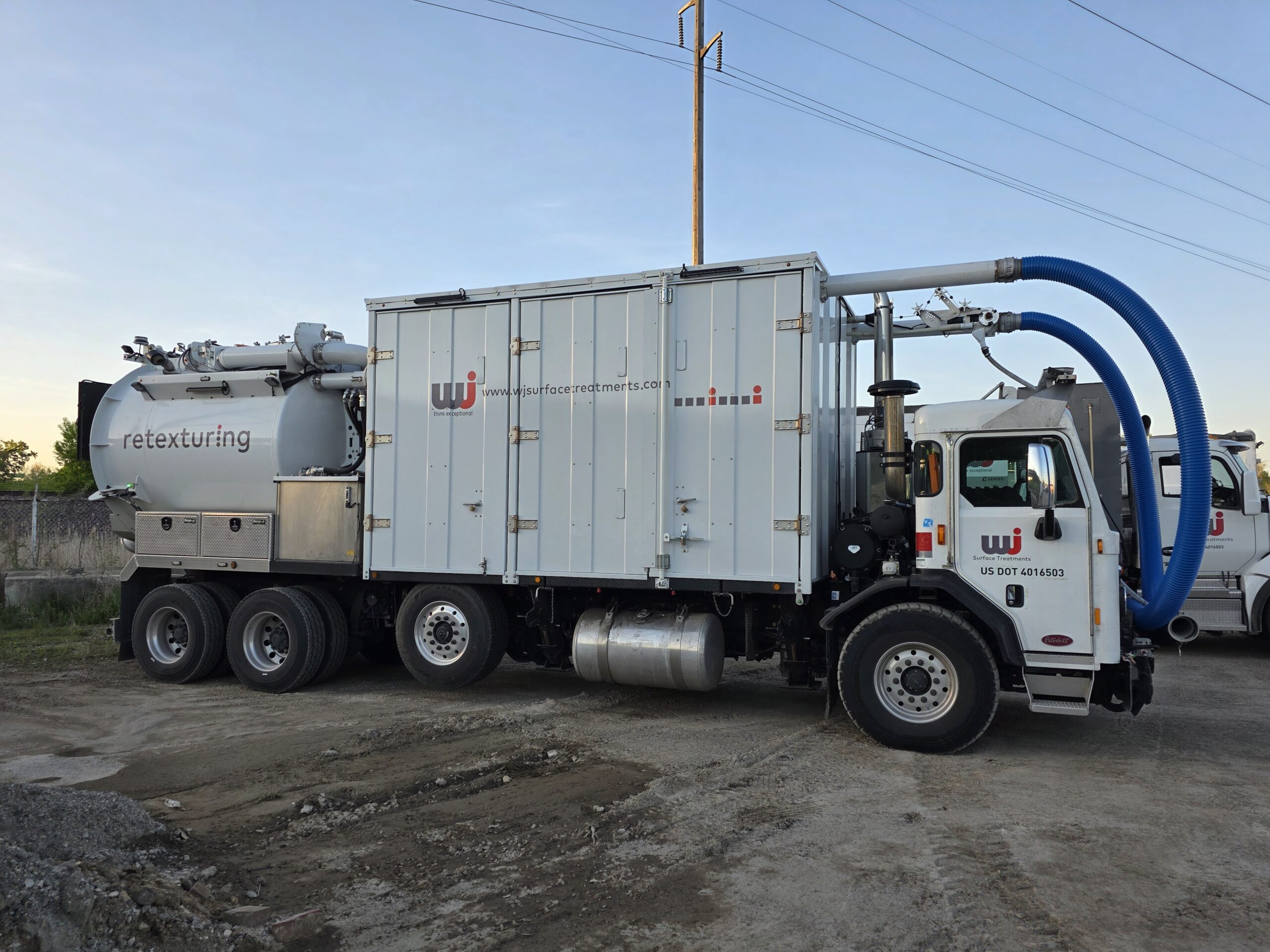Road surface retexturing: enhancing safety for less.
Services: Retexturing
A road surface texture is a combination of micro-texture and macrotexture, two important characteristics of a road surface that significantly impact vehicle traction and safety. Over time due to wear by tyres, the aggregate in the road surface becomes polished and smoother, resulting in a loss of friction and skid resistance. Road surface retexturing is a technique used to treat both the micro and macro texture within the road surface restoring skid resistance to the same or higher levels than when the surface was first laid.
We delve deeper into common road surfaces, the differences between micro and macrotexture and how retexturing works.
Micro-texture vs macrotexture
Micro-texture refers to the microstructure of the material within the road surface such as the size and shape of the aggregate and typically has a wavelength less than 0.5mm. Micro-texture aids in skid resistance at low speeds and wet weather conditions.
Macrotexture refers to the more pronounced surface irregularities and its wavelengths are 0.5mm to a few centimetres in size. Macrotexture contributes to skid resistance at high speeds and assists with water drainage.
Macrotexture is typically measured using a surface texture meter which uses a laser to project a thin continuous beam of light onto the road surface, transversely in the direction of travel. This measurement is repeated every 2mm over a width of 100mm to build a detailed record of the mean profile depth of the surface.
There are currently no direct measurements of micro-texture to assess friction, but there are measurement systems that provide an indication of micro-texture and friction such as brake tests.
Typical road surfaces
Concrete – A concrete road is typically a mixture of cement and aggregates, along with water and any admixtures, such as accelerators to speed up the setting time. In concrete, micro-texture is usually provided by the fine aggregate in the mixture and macrotexture is achieved through small surface channels, grooves or indentations.
Asphalt – An asphalt road is a mixture of asphalt binder with aggregates, along with any filler materials or modifiers, such as polymer modifiers designed to improve elasticity and temperature resistance. Macrotexture is generally provided in asphalt roads through aggregate gradation and micro-texture is provided by the surface texture of the aggregate that is mixed with the asphalt.
Pavement Friction Testing
In the US Pavement Friction Measurements used by state highway agencies are undertaken via non-continuous or continuous high-speed testing.
Non-continuous pavement friction measurements are the standard method of testing used, specifically via LWST (Locked-Wheel Skid Trailer). This testing method involves a test vehicle with one or more test wheels which is brought to a desired testing speed on a wet pavement surface, the tyre’s breaking system is then actuated to lock the tyre and special instruments within the test vehicle measure the friction force between the test tyre and pavement for 3 seconds, reporting the result as 1 second average skid number. LWST is based on a sample approach and one or two tests are typically performed per mile, which results in only a small proportion of the pavement surface being tested.
Continuous pavement friction measurement (CPFM) involves continuous friction measuring equipment (CFME), such as side force continuous friction testing or fixed slip as it is otherwise known. The process works by skidding a special non-treaded tyre across the pavement surface at high speeds and measuring the resistance force, to calculate frictional properties of a surface.
CFME can measure pavement friction continuously through tangents, curves and intersections, providing much more reliable data than LWST.
Why do road surfaces need retexturing?
Over time the surface of a road can become polished due to wear and tear from traffic, this is particularly apparent in areas with high traffic volume. This polishing of the road’s surface reduces its skid resistance and can create hydroplaning making it more difficult for vehicles to break quickly in wet conditions. Retexturing helps to treat both the micro and macro texture within the road surface restoring the surface’s roughness and improving skid resistance.
Retexturing not only improves road safety it can also:
Noise reduction – Smooth surfaces can amplify noise, while textured surfaces can break up and dissipate sound waves. Certain retexturing methods can create a surface pattern that helps to reduce noise by disrupting sound wave transmission.
Extend road life – Retexturing is a much more cost-effective solution compared with resurfacing, by periodically retexturing a road surface it’s lifespan can be extended, delaying the need for full resurfacing.
Enhance road marking visibility – Similarly to a pavement’s surface, road markings become worn overtime and therefore become less visible. Retexturing can provide better adhesion for road markings, resulting in improved longevity.
Retexturing Techniques
- Shot Blasting: This technique involves propelling small steel shots at high velocity onto the road surface. The impact removes worn or polished surface layers, restoring texture and skid resistance.
- Milling/Grinding: This method uses rotating drums with cutting teeth to remove a thin layer of the road surface. It creates a rougher texture and can also level out irregularities.
- Water Jetting: High-pressure water jets can be used to remove surface deposits and open up the aggregate, improving both micro and macrotexture.
- Grooving: Cutting grooves into the surface creates channels that improve water drainage and can also reduce noise.
In summary, road retexturing is a scientific process that enhances road safety and durability by restoring the critical frictional properties and improving water drainage.
